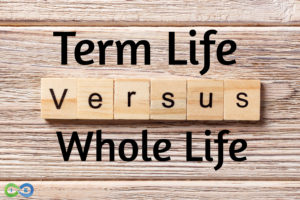It’s tempting to think of charitable donations and bequests to heirs as a zero-sum, either/or proposition. There’s a finite amount of wealth to be distributed, and every dollar that goes one place can’t also go somewhere else.
Now, to a certain extent, that’s an unavoidable constraint. However, when you bring life insurance into the mix, you can implement strategies that actually allow you to expand the pie. That is, using life insurance and charitable giving in a complementary manner lets you increase the overall pool of wealth ultimately passed along.
Table of Contents
- Life Insurance Charitable Giving
- 3 Methods To Accomplish Your Goal
- Pros and Cons of Using Life Insurance for Charitable Giving
- Estate Planning Tools for Coupling Life Insurance and Charitable Giving
Life Insurance Charitable Giving
Using life insurance for charity works by taking advantage of the preferential treatment afforded to both life insurance and charitable giving under the tax code and the laws of most states.
Essentially, because you’re paying less money to the IRS, you end up transferring more net wealth to your heirs and to charity.
You lower your taxes by replacing taxable assets in your estate with assets that transfer without triggering the estate tax.
In some scenarios, you also benefit from sizeable income tax deductions during life.
To make it work, you need to plan ahead so that your life insurance and charitable giving work in tandem. To do that, you need to know a little about how life insurance can be used to enable charitable contributions.
We usually think of life insurance as a means of providing for loved ones and charitable donations as a way to support good causes. But charitable giving with life insurance is an excellent way to leave a lasting legacy to your chosen charity.
3 Methods To Accomplish Your Goal
There are three basic ways of using life insurance to support a charity: donating an existing policy to charity; purchasing a policy on behalf of a charity; or using a policy as a substitute for other donated wealth.
Each approach can be useful under the appropriate circumstances.
But, if your goal is to maximize the combined legacy you pass along to others, the third approach frequently offers the most bang for the buck.
1. Donating a Policy to Charity:
When you donate an existing policy to charity, you are turning over legal ownership of the policy to your chosen charity. The charity assumes all rights in the policy, including vested rights in the cash value, the right to receive the death benefit, and the right to name the beneficiary.
As long as all “incidents of ownership” are transferred to the charity, you get a current tax deduction measured as the lesser of the policy’s fair market value or your basis in the policy.
Either way, the policy’s value is also completely removed from your taxable estate.
Upon assuming ownership, the charity can surrender the policy for cash or wait for the death benefit to pay out.
Because they’re technically responsible for paying any future premiums, charities will often elect to cash out rather than run the risk of a future lapse.
Donors who gift life insurance policies to charity frequently arrange for future premiums in advance—or donate “paid-up” policies. But many charities don’t want to worry with maintaining the policy and prefer to receive the cash up-front.
Alternatively, you can retain ownership of the policy and simply designate the charity as the beneficiary, in which case you retain the contractual responsibility to pay premiums, which is simpler for all parties, but the downside is that you do not get the current tax deduction.
When the death benefit pays out, it is technically part of your estate but won’t be counted for estate tax purposes because the money is going to charity.
2. Purchasing a Policy for a Charity:
Under this approach, you apply for a policy in the name of your favorite charity for the express purpose of making a posthumous gift of the death benefit. For relatively young donors especially, this can allow for a substantially larger donation than would otherwise be possible.
The charity technically owns the policy and therefore has the contractual obligation to pay premiums. The expectation, though, is that you will either make regular donations to the charity to cover the premiums, or you will pay them directly to the insurance company on the charity’s behalf.
In either scenario, you can deduct the premiums on your income tax return each year they’re paid, though the deduction is greater (50%) if you send the money to the charity first than if you pay the insurer directly (30%).
The downside of this approach is that neither you nor the charity get to see the fruits of your generosity during your lifetime.
Some charities are also reluctant to accept policies donated this way due to the risk of lapse and the uncertainty as to when funds will actually be received.
Most charities would prefer you just make recurring donations of whatever you would be spending on the premiums. Another concern is that, depending on how long you live, the purchasing power of the proceeds may have significantly decreased.
3. Life Insurance as a Substitute for Other Donated Wealth:
With this strategy, you are using a life insurance policy to effectively replace wealth that you bequeath to charity but that would otherwise be inherited by your heirs.
Because both the charitable bequest and the life insurance have substantial tax benefits, you are expanding the total combined wealth ultimately received by your heirs and your chosen charity by reducing the amount paid to the IRS.
You see, assets donated to charity are not included within your taxable estate. So, if you make a testamentary contribution (i.e., a donation via your last will and testament), the charitable donations are deducted when calculating estate taxes.
If you make the donation during life, you simply don’t own the donated wealth when your estate is calculated. In the latter case, you potentially reduce income taxes due for the year of the contribution.
Of course, any assets left to charity aren’t available for heirs. But that’s where the life insurance comes in. To compensate for the charitable contribution, you obtain a life insurance policy that pays out to your heirs.
Consider an ILIT
Normally, a policy owned by a decedent is included within the decedent’s estate—whether it pays to a named beneficiary or to the estate itself. However, if structured correctly, a policy can be set up to exist entirely outside of the estate, and, therefore, not trigger any estate taxes. To work, the policy is usually owned by either a trusted third party or an Irrevocable Life Insurance Trust (“ILIT”).
An ILIT can be funded either by purchasing a new policy in the trust’s name or transferring an existing policy to the trust. However, to be outside of an estate, a policy must have been transferred at least three years prior to the date of death, so that if a transferred policy pays out less than three years after the transfer, it will be included within the decedent’s estate.
Critically, for the policy to pay out as intended, the life insurance premiums must be paid to the insurance company. Usually, the grantor gifts sufficient cash to the trust as premiums come due, and the ILIT’s trustee makes the payments to the insurer on the trust’s behalf.
If annual premiums exceed the $18,000 per year gift-tax exclusion, the overage may count against the grantor’s combined lifetime gift/estate tax exemption, though there are techniques for eliminating or reducing the impact of that potential problem.
Irrevocable life insurance trusts offer additional advantages beyond just removing wealth from your taxable estate. The policy’s proceeds are paid directly into the trust and can only be distributed by the trustee according to the grantor’s directions. So, if a beneficiary isn’t particularly good with money, you can set up an ILIT to prevent rapid depletion of wealth.
And assets held in an ILIT cannot be attached by beneficiaries’ creditors. If your intended beneficiary has significant debts or an outstanding civil judgment, the trust protects the assets from creditor claims.
Pros and Cons of Using Life Insurance for Charitable Giving
Pros:
- Tax Efficiency: Utilizing life insurance for charitable giving can result in significant tax advantages. The strategy allows for lower estate taxes and, in some cases, sizable income tax deductions during the donor’s lifetime, optimizing the wealth transferred to heirs and charities.
- Expanded Wealth Pool: By leveraging the tax benefits associated with life insurance and charitable donations, donors can increase the total amount of wealth passed on to their beneficiaries and chosen charities, thereby ‘expanding the pie.’
- Legacy Building: Life insurance policies allow donors to leave a large and lasting legacy to their chosen charities, often surpassing what might have been possible through direct cash donations alone.
- Flexibility and Control: Through vehicles like Irrevocable Life Insurance Trusts (ILITs) and Charitable Remainder Trusts (CRTs), donors can control how their gifts are used, ensuring that their philanthropic goals are met even after they’re gone.
- Asset Replacement: Life insurance can be a strategic tool to replace wealth directed towards charity, ensuring that heirs are adequately provided for.
Cons:
- Complexity and Planning: Executing these strategies requires careful planning, knowledge of tax laws, and potentially complex setups like setting up trusts, which might necessitate professional assistance.
- Policy Maintenance and Premium Payments: Donors must keep the life insurance policies in force by paying premiums on time, which might involve additional financial commitments and planning.
- Charity’s Preference for Cash: Some charities might prefer immediate cash donations over life insurance policies due to the uncertainties involved, such as the timing of the death benefit payout and the potential for policy lapse.
- Potential Impact on Donation Value: The purchasing power of the death benefit might decrease over time due to inflation, potentially reducing the value of the charity’s donation.
- Regulatory and Tax Law Changes: Tax laws and regulations can affect the usefulness and benefits of these strategies, potentially requiring adjustments to the planned giving approach.
Estate Planning Tools for Coupling Life Insurance and Charitable Giving
There are numerous approaches to using life insurance in charitable planning. A common theme in many plans is to apply tax deductions derived from charitable contributions toward life insurance premiums—offsetting some or all the costs of procuring the policy. Remember, if structured properly, both the charitable gift and the life insurance proceeds can be removed from your taxable estate.
CRT: Charitable Remainder Trust
A Charitable Remainder Trust (“CRT”) is an irrevocable trust that reserves income to the grantor for life and then pays out remaining trust assets to a beneficiary charity upon death.
When the trust is funded, the grantor receives a current income tax deduction measured according to the expected distribution the charity will receive at death.
Assets held in the trust are managed by the trustee, with any growth usually distributed to the grantor—sometimes along with a small percentage of principal.
A Popular Strategy
A popular strategy is to apply the tax deduction and the income received from the charitable remainder trust toward premiums on a life insurance policy held in an irrevocable life insurance trust.
Then, upon the grantor’s death, neither the trust remainder paid to the charity nor the life insurance proceeds are subject to estate taxes.
An added benefit of a charitable remainder trust is that, if the trust if funded with highly appreciated assets, the growth won’t be hit with high capital gains taxes when the CRT sells the assets. Depending upon the value of the assets and amount of growth, this can potentially lead to enormous tax savings.
CGA: Charitable Gift Annuity
A Charitable Gift Annuity (“CGA”) is a similar concept, except that, instead of funding a trust, you make a sizeable donation to a charity.
The charity, in turn, agrees to pay you a lifetime annuity, which serves as a steady income stream for the rest of your life. Upon death, the entire remaining value vests in the charity.
Like with a charitable remainder trust, a charitable gift annuity comes with a substantial current income tax deduction when the CGA is executed, and the annuity payments can be applied toward life insurance to further minimize estate taxes.
Real Estate
Another approach to charitable giving is to donate a remainder interest in real estate to charity. Typically, you retain a life estate—allowing you to continue benefiting from the property for life. When the deed is executed, you receive a large income tax deduction measured according to the real estate’s value, your life expectancy, and prevailing interest rates. Then, at death, title to the property vests in the charity.
This results in a large asset being effectively removed from your taxable estate, which can be replaced with non-taxed life insurance funded in part by the tax deduction or from income generated by the property.
Use a Will
For people who like to keep things simple, you can also make a charitable bequest directly through your will. You don’t receive any income tax deduction, but assets given to charity are not subject to estate tax.
This approach can be useful if, for instance, you already have a sizeable life insurance policy which will be included in your estate, and you want to minimize the estate tax hit on the policy proceeds.
Life insurance proceeds are liquid and can be readily applied toward administration costs, estate debts, and taxes, whereas illiquid assets must sometimes be sold to provide the cash necessary for estate expenses.
This can result in a loss of aggregate wealth in the estate if the executor cannot promptly find a buyer willing to pay fair market value or if the value of the asset is temporarily reduced, such as with stocks in a bad market.
Both life insurance and charitable donations are popular topics in estate planning. And for good reason. Both are effective means of reducing estate taxes, and, with either, you get to ensure your hard-earned wealth ends up in good hands.
When you leave money to charity, you can support a worthy cause and hopefully continue making the world a better place after you’re gone.
And a life insurance policy provides a substantial, guaranteed inheritance to one or more loved ones of your choice.
Either way, you’re applying your wealth in a meaningful way and reducing your estate’s tax liability in the process.
If you are interested in speaking to a life insurance planning professional about using life insurance for charitable purposes, please give us a call today for a complimentary strategy session.






2 comments
willie slaughter
Hello just looking for information on life insurance and trust options combined. Thanks! Willie
Insurance&Estates
Hello Willie, thanks for connecting. A great first step is to schedule a call with Barry by requesting a meeting at barry@insuranceandestates.com.
Best, Steve Gibbs for I&E